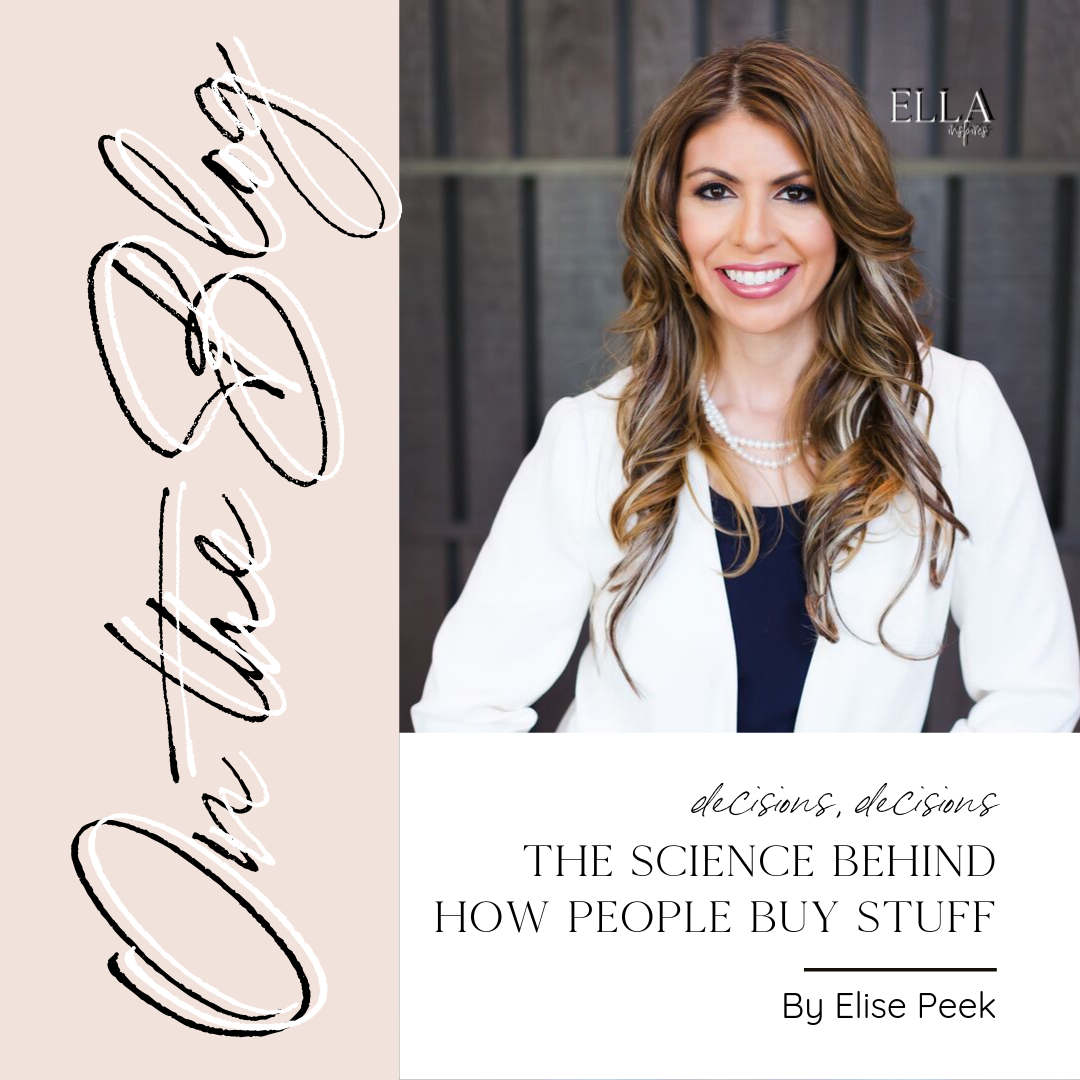Decisions, Decisions: The Science Behind How People Buy Stuff by Elise Peek
To this day, the smell of donuts and coffee..
… takes me back to my childhood. Memories of family, Sunday mornings, happiness, and a sentimental warmth that still-drives-my-need towant-to-consistently-buy-these-sugary treats-even-when-I-know-they’re-bad-for-my-health.
In 2015, Time Magazine published an article about the science of nostalgia and how comfort foods can be subconsciously be tied to our social relationships and feelings of belonging. It is these kinds of complex emotional experiences that can shift us subconsciously to make buying decisions that cannot be predicted easily.
Scientists have found that some revenue losses can be attributed to the gap that exists between what people think they would buy and what they actually buy.
This is especially due to certain values, memories, or deep emotional connections they don’t realize they have. The fact that this kind of data cannot be captured using traditional marketing research, such as focus groups and surveys, has led to the creation of Neuromarketing.
Neuromarketing is a field that can help business owners to identify the gaps between a customer’s conscious and unconscious thoughts and what leads them to take action.
By using techniques used in Neuroscience (such as brain imaging, eye tracking, as well as methods that measure body signals -- such as breathing, heart rate, perspiration, blood flow, and facial muscular movement), researchers can more accurately predict the precise moment when people are more likely to make decisions. Scientists believe this is a win-win situation because companies can more accurately fulfill the needs of consumers.
In recent years, large corporations and universities from all over the world have poured big money into Neuromarketing research. Here are just two valuable findings to encourage customers to buy:
Experiment With Color
Consumers take 90 seconds to form opinions about products, and around 62-90 % of this interaction is determined by the color of the item alone. Google found that the right shade of blue can be worth $80 million dollars. Microsoft’s research team altered the color of links and found that the right shade of blue exponentially increased link clicks. If your business has posted a call-to-action on websites, emails, and social media, try altering colors based on what resonates best with your target audience.
Alleviate Consumer Pain
Traditional marketing tells us to focus on the pleasure (marketing benefits) of a product or service. Neuromarketing research has confirmed that consumers care more and take action faster to alleviate pain. Response given by the brain is three times stronger than the response given when it seeks pleasure. You can implement this in your business today by crafting three social media posts that alleviates different pain points you know your audience has. Compare engagement rates and reach for each post and select the one that resonates most with your target audience in your next paid advertisement. You’ll find that this tactic can help decrease advertising costs while increasing conversion rates.
Options Can Deter Sales
Traditional marketing has suggested that customers love options. However, a recent neuromarketing study from Columbia University revealed that too many choices deters potential customers from buying. There’s a reason why HBO, Amazon’s Audible, and Netflix give you just one button when viewing their website from a mobile phone. They want to make it as easy as possible for you to take action. When planning your website or email campaign, consider giving your customer just one call-to-action or no more than two to avoid decision fatigue. Software companies like Mouseflow and Hotjar can also assist by using heat maps to track areas on your website that are most traveled and pinpoint where your customers are dropping off.
Hi, I’m Elise!
Elise is the Co-Owner & Chief Disruptor for the Digital Disruptors. She is a speaker, trainer, and marketing strategist who specializes in helping small businesses navigate the world of digital marketing. She is also a coffee connoisseur, a lover of automation, and you can find her writing in her blog The Digital Buzzer.


